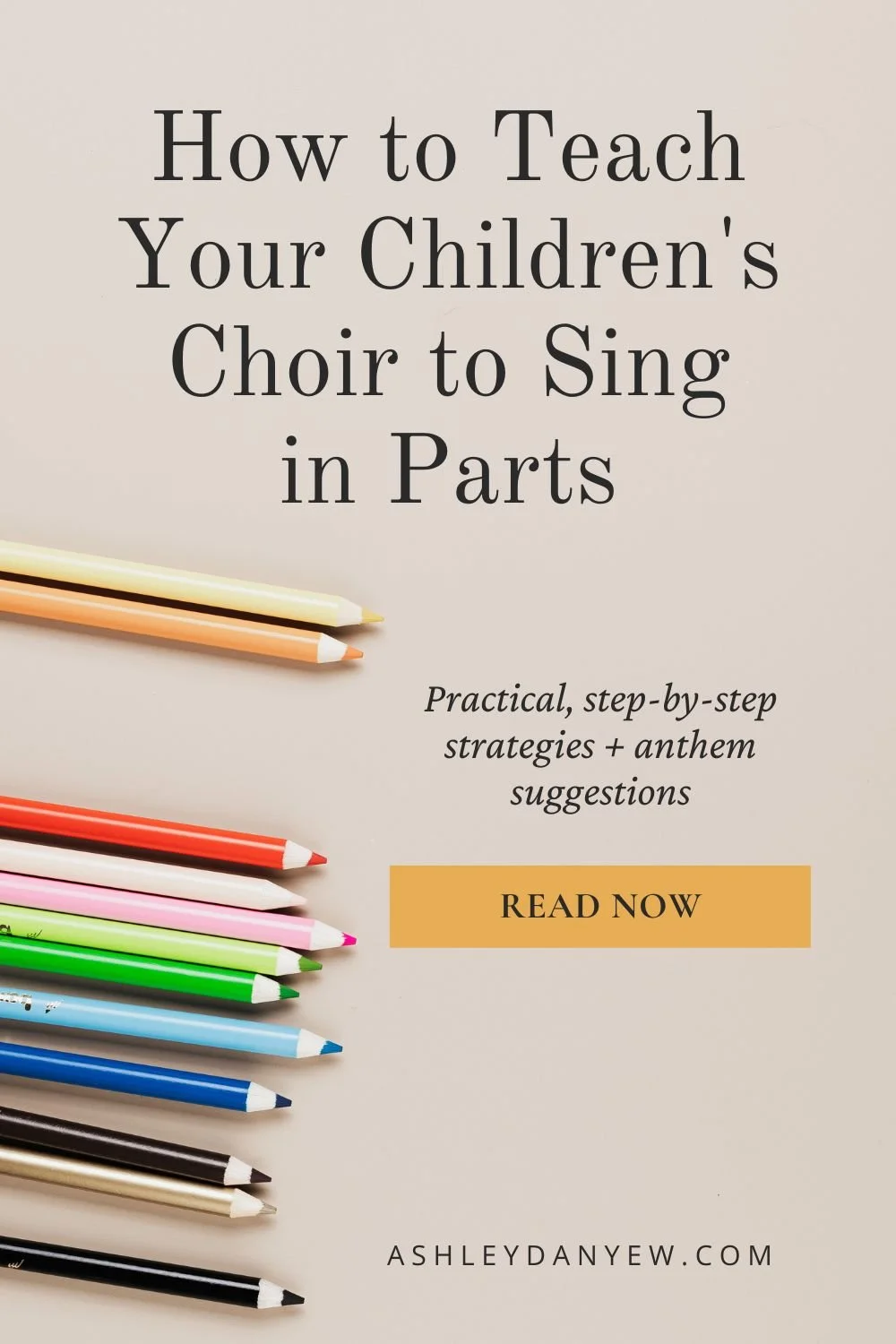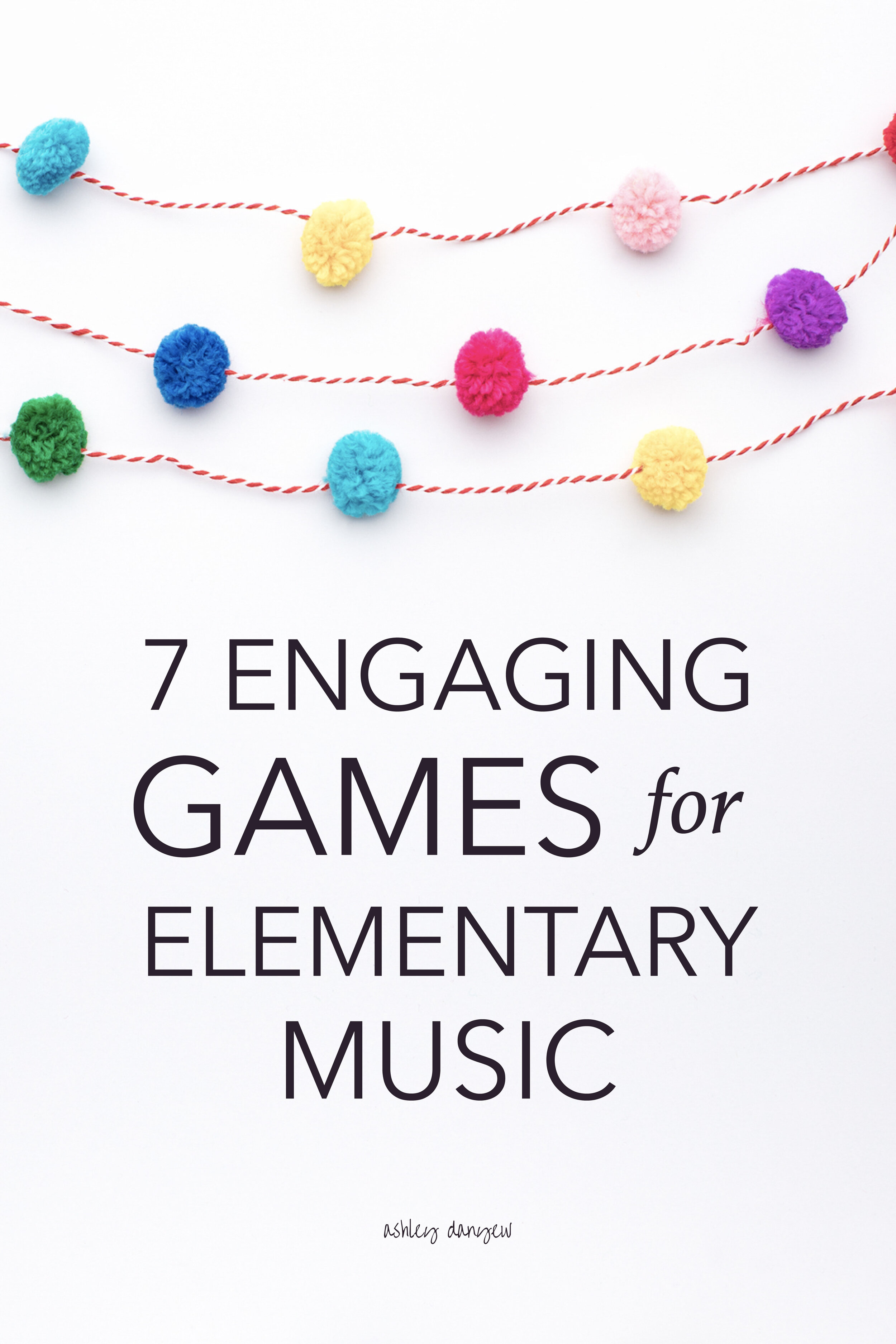This post is geared toward elementary music educators and children’s choir directors looking for inspiration, ideas, and practical suggestions for teaching children about music and developing musicianship little by little, week by week.
You’ll learn how to define musicianship plus 10 specific, practical ways to build meaningful learning opportunities into your classes and rehearsals each week.
Bottom line? Being intentional in your planning and specific about the concepts you want to introduce and the skills you want to develop is essential.
Let’s start by defining what musicianship is:
What is Musicianship?
Musicianship may be defined a few different ways.
Some might say it’s the skills you have as a musician: things like listening, hearing, singing, playing, creating, responding, etc. Others might say it’s the ability to “think in sound,” or audiate (source). This means to hear music in your head without any sound being present. You might think of this like the ability to read a book silently - hearing the words in your head as you read them but not actually saying them out loud.
Both of those—reading silently and hearing music without any sound being present—are things developed through exposure and experience.
There are many different aspects of musicianship, all things you can touch on in our rehearsals throughout the year. Things like:
Listening (including pitch, intervals, phrasing, dynamics, form)
Singing (including breathing, vowels, tone production)
Creating (or improvising, making music spontaneously in the moment)
Expression (including phrasing, dynamics, moving)
Tonality (including singing on solfege, and understanding the difference between a melody, a bass line, and a harmony part)
Rhythm/steady beat (including counting, chanting, moving)
Reading (including music notation, symbols, intervals)
You can include many of these things in your rehearsals throughout the year to cultivate various aspects of musicianship in your young singers.
This brings me to the main part of today’s post: 10 practical things you can do to develop musicianship in your children’s choir, week by week, throughout the year.
10 Ways to Develop Musicianship in Children’s Choir
01 | Choose warm-ups that prepare new concepts
Researchers indicate that it’s important to hear and sing patterns before actually seeing them (source).
Think about a musical concept like legato: what does it mean to sing legato? What does it sound like? What does it feel like in the voice? Another concept might be steps vs. skips: how are they different? What do they feel like in the voice? What do they sound like?
Again, this is done without notation, just listening to the differences first and experiencing them in your own voice.
Think about ways to prepare new concepts like dynamics or melodic patterns that might come from a new anthem or piece you plan to introduce, dotted rhythms, or more complex rhythm patterns that might be unfamiliar.
All of these things can be prepared through warm-ups that you do at the beginning of your rehearsals. As Josh Pedde of the Indianapolis Children's Choir said, "Warm-ups are where you teach your choir how to sing."
Even something as simple as "alleluia" on a descending 5-note scale is an effective exercise and warm-up tool, as it goes through all the important vowels we use in singing.
It’s a great way to introduce those vowels and talk about vowel production, tone production, phrasing, legato singing, stepwise motion, etc., all without going into too much detail. Let your singers experience all those things through the warm-up before you really dig into them in the context of a piece of music.
Related posts:
The Ultimate Guide to Children’s Choir Warm-Ups [+ free eBook]
The Value of Teaching Vowels to Your Children’s Choir
02 | Sing a cappella
Young singers need time to learn how to use their voices and manipulate them, so singing a cappella gives them a great opportunity to listen to each other and learn how to adjust their voice in the context of what’s happening around them.
It also gives them an opportunity to learn how to predict melodic and rhythmic patterns, instead of simply responding to the keyboard or the piano, and they can focus more on the shape and direction of the vocal line without the distraction of accompaniment (at first).
This is especially important when they’re first learning something: focus on that melody - the phrasing and shape of the musical line - without the distraction of another part.
03 | Use props and other visuals
This helps make learning fun and memorable. Think about ways you can incorporate more visuals into your rehearsals.
Draw phrase shapes in the air, or on the board, if you have one.
Use a tennis ball to show good singing mouth shape.
Use color wheels or paint chips to show dynamic variations.
Play a balloon game where the children have to keep the balloon up in the air for the duration of a whole note or a measure or whatever kind of concept you’re introducing.
The more ways you can think of to incorporate visuals and props to help make music (an aural art) more tangible, the better.
04 | Chant the rhythm of a piece
This is a great practice strategy for a new piece or section of a piece. It’s an opportunity to break the piece apart into layers and focus on one musical element at a time.
Here’s an example of what this might sound like:
Again, this is only for purposes of illustration and is not intended for the children to read.
When chanting the rhythm, speak with inflection instead of chanting like a robot, where everything is low in the voice. Encourage your singers to have rises and falls in their voice and make it more dynamic and interesting.
Use a neutral syllable like “bah” at first. Once the rhythm is more familiar, switch to a counting method or the text of the anthem or the song.
For younger choirs, chant a phrase like this and have your singers echo back. Once they can do it correctly and confidently, move on to another pattern. If there is still some hesitation, try doing the same phrase a few more times until it’s more secure.
If your choir is to the point where they are starting to read some music notation, pull out some rhythm patterns from a piece they’re working on and write them on a board or a place where everyone can see them. Point to each rhythm as you chant it and point as they chant it again. This is a way to bridge rote learning and music-reading.
05 | Sing on a neutral syllable
Like no. 4, this is a useful strategy for a new piece or section of a piece. Use a neutral syllable like “bum” or “doo” in the beginning, rather than singing with text right away. This helps children focus on the musical qualities of the melody.
Take the text out of the equation for a moment, so you don’t need to worry about how to pronounce certain words, proper vowels, consonants—any of that. Instead, focus solely on lyricism, phrase shape, breath, dynamics, intervals, etc.—all the melodic elements (and rhythm, of course, at this point).
If you’re teaching by rote, sing this on a neutral syllable and have your singers echo back. If your choir is beginning to read, have them point to the notes in their music as they sing or, if the music is on the whiteboard or a screen, have them draw the shape of the melody in the air as it rises and falls.
Learn how to lead and teach your children’s choir, creatively and confidently.
Join me in Directing a Church Children’s Choir 101, a
4-week online training program geared specifically toward children’s choir directors in church settings.
06 | Use movement to develop a sense of steady beat
Listen to a piece of music (with a steady tempo, of course!) and have the choir tap the steady beat with you. Mix it up by changing the placement of the beat every 4 measures: from their laps to their shoulders to their heads, to their noses, etc.
If you have space, have the children step the steady beat (moving around the room) as they listen. No talking, of course! Just listening and showing the steady beat. Have them step it, hop on one foot, clap it, tap on different places of their bodies, etc.—anything to get them a little more actively engaged.
Use clapping games to reinforce steady beat, too, and try teaching them a 4-beat movement sequence to use while listening to a piece of music (e.g. step, step, pat, clap or pat, pat, clap, clap).
Related post: 16 Clapping Games for Children’s Choir
07 | Use movement to develop listening skills
You can teach form through movement (while listening). For instance, do a circle dance and change direction every 8 bars, or so and change to going in and out when you hear a new section in the music.
Draw phrase shapes in the air for a more lyrical piece and have the singers draw in the air with you. Try using corresponding movements for different dynamic levels or to match tempo changes. This is a great way to assess individual musical understanding.
Related post: 10 Movement Activities for Children’s Choir
08 | Study the score together
I recommend doing this in small sections, maybe 8-16 bars at a time.
Piece part of the score together (using PowerPoint or an enlarged copy cut up into individual measures). This is a great way to introduce score-reading to your singers without just handing out copies of the music and asking them to follow along.
Give your singers some things to find: Look for patterns (melodic and rhythmic), things that look the same. Show them how to find dynamic markings and color-code them. Have them look for familiar intervals, things you’ve prepared aurally through warm-ups and other things, and distinguish between them by drawing a box around the 3rds, a triangle around the 4ths, a starburst around the 5ths, etc.
09 | Turn it into a game
Children love games. This helps make learning fun and memorable.
Use musical games to review vowels, intervals, rhythm patterns, solfege, etc. Teach improvisation by playing a musical question-and-answer game.
Play a “Musical Memory” matching game to help children identify same vs. different in various one-bar melodic and rhythm patterns. This makes a great gathering activity that children can play as they arrive before you begin rehearsal.
Related posts:
7 Fun Games for Children’s Choir
Fun, Easy Gathering Activities for Children’s Choir
10 | Create opportunities for musical decision-making
Reflection is a vital component of learning.
It’s an opportunity to put the newfound musical skills and knowledge they’ve developed into practice and it gives children that all-important sense of ownership and responsibility.
As all musicians know, it’s important to learn how to make musical decisions, and teaching our young singers how to do this, right from the beginning, is powerful. Have them participate in making the musical decisions you make as a choir.
“Tell me and I forget. Teach me and I remember. Involve me and I learn.”
Help your students learn the language of music and develop their music-reading skills.
Printable, age-appropriate tonal and rhythm pattern card sets for children in K-5th grade
Younger Elementary
Includes 88 tonal pattern cards (I, IV, and V7
chord tones in major and minor) + 64 rhythm pattern cards (duple and triple)
I’d love to hear from you:
I hope this post inspires you to plan creative and intentional ways to develop musicianship in your children’s choir each week. What are your favorite teaching strategies?











































